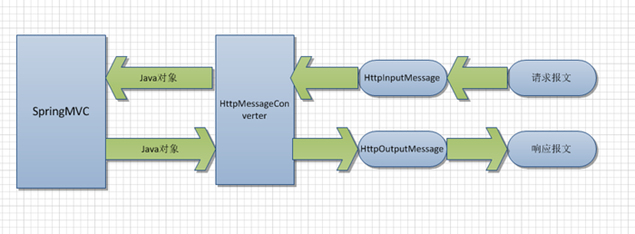@ResponseBody使用须知
-------------------siwuxie095
@ResponseBody 使用须知
使用 @ResponseBody 注解映射响应体
@ResponseBody 注解可被应用于方法上,标志该方法的返回值
应该被直接写回到 HTTP 响应体中去(而不会被被放置到 Model
中 或 被解释为一个视图名)
在实际开发中,返回 JSON 是最常见的一种方式,而 SpringMVC
提供了一种更为简便的方式输出 JSON(非 JSP 页面),那就是使
用 @ResponseBody 注解
在输出 JSON 时,需要 Jackson 的 jar 包支持,2.x 版本需要导入
如下三个 jar 包:
(1)jackson-core
https://github.com/FasterXML/jackson-core/wiki
http://repo1.maven.org/maven2/com/fasterxml/jackson/core/jackson-core/
(2)jackson-annotations
https://github.com/FasterXML/jackson-annotations/wiki
http://repo1.maven.org/maven2/com/fasterxml/jackson/core/jackson-annotations/
(3)jackson-databind
https://github.com/FasterXML/jackson-databind/wiki
http://repo1.maven.org/maven2/com/fasterxml/jackson/core/jackson-databind/
「截止目前(2018/03/01),Jackson 最新版本为 2.9.4」
例如:
编写一个实体类
User.java:
|
package com.siwuxie095.entity;
public class User {
private String userId; private String userName; private String userSex; private String userAge;
public String getUserId() { return userId; } public void setUserId(String userId) { this.userId = userId; }
public String getUserName() { return userName; } public void setUserName(String userName) { this.userName = userName; }
public String getUserSex() { return userSex; } public void setUserSex(String userSex) { this.userSex = userSex; }
public String getUserAge() { return userAge; } public void setUserAge(String userAge) { this.userAge = userAge; }
@Override public String toString() { return "User [userId=" + userId + ", userName=" + userName + ", userSex=" + userSex + ", userAge=" + userAge + "]"; }
} |
编写一个 Controller 类
UserController.java:
|
package com.siwuxie095.controller;
import java.util.ArrayList; import java.util.List;
import org.springframework.stereotype.Controller; import org.springframework.web.bind.annotation.RequestMapping; import org.springframework.web.bind.annotation.ResponseBody;
import com.siwuxie095.entity.User;
@Controller public class UserController {
/** * 注意:这里返回类型不是 ModelAndView * * 使用 @ResponseBody 注解将返回的 POJO * 对象的 List 集合序列化成 JSON */ @RequestMapping("/show/hi") @ResponseBody public List<User> show() {
List<User> userList = new ArrayList<User>(); for (int i = 0; i < 10; i++) { User user = new User(); user.setUserId("100" + i); user.setUserName("小明-"+i); user.setUserSex("男"); user.setUserAge("1" + i); userList.add(user); }
return userList;
}
} |
访问路径:
http://localhost:8080/工程名/show.do
原理:
当一个处理请求的方法被标记为 @ResponseBody 时,就说明
该方法需要输出其它视图(JSON、XML),SpringMVC 通过
已定义的转化器做转化输出,默认输出 JSON

注:源码详见 spring-webmvc 的 jar 包中第二个包 org.springframework.
web.servlet.config 中第一个类 AnnotationDrivenBeanDefinitionParser

值得注意的是:
@RequestBody 是写在方法参数前,作用于方法参数
@ResponseBody 是写在方法上,作用于方法返回值
参考链接:
附:
推荐一个模拟发送请求的 Chrome 插件 Advanced REST Client,非常好用!
https://chrome.google.com/webstore/detail/advanced-rest-client/hgmloofddffdnphfgcellkdfbfbjeloo
【made by siwuxie095】
posted on 2018-03-01 11:04 siwuxie095 阅读(6534) 评论(0) 编辑 收藏 举报


